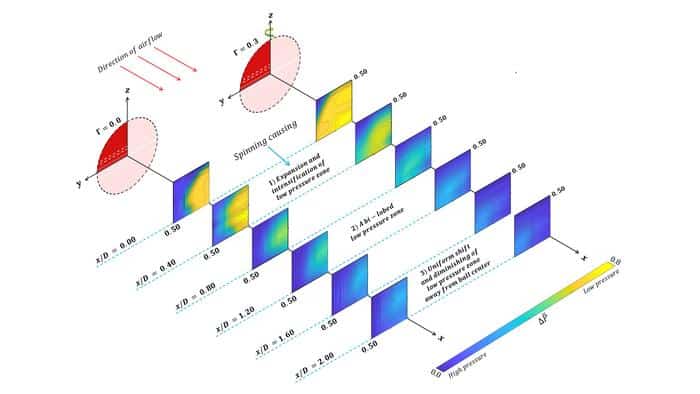Researchers have unveiled the science behind unconventional cricket bowling techniques that dazzle batters, shedding light on how arm angles and spin rates shape the game’s future.
In the world of cricket, a subtle yet impactful revolution is underfoot, one that has bowlers tweaking their techniques to bewilder batters and win games. Recent research sheds new light on this transformation, exploring the physics behind an increasingly popular bowling style that involves a near-horizontal arm delivery.
In a study published in Physics of Fluids by AIP Publishing, a team led by researchers Aafrein Begam Faazil, Abdul Rahim Farhatnuha and Kizhakkelan Sudhakaran Siddharth from Amity University Dubai has analyzed the aerodynamic effects of these bowling techniques. The research focuses on the unique arm angles and the transverse spin applied to cricket balls, an approach notably adopted by Sri Lankan cricket legends Lasith Malinga and Matheesha Pathirana.
“The unique and unorthodox bowling styles demonstrated by cricketers have drawn significant attention, particularly emphasizing their proficiency with a new ball in early stages of a match,” said Siddharth in a news release. “Their bowling techniques frequently deceive batsmen, rendering these bowlers effective throughout all phases of a match in almost all formats of the game.”
By employing a wind tunnel and advanced imaging systems, the team investigated how the transverse spin affects the pressure fields around a cricket ball. Notably, they examined cricket balls spinning at rates up to 2,500 revolutions per minute. These high-speed spins were observed to create low-pressure zones near the ball that expanded and shifted downstream during flight. At higher spins, the low-pressure zones evolved into a distinct bilobed shape, suggesting these techniques harness the Magnus effect to alter the ball’s trajectory.

Impact of a cricket ball’s transverse spin on nearby pressure distribution
Credit: Aafrein Begam Faazil, Abdul Rahim Farhatnuha and Kizhakkelan Sudhakaran Siddharth
“The simultaneous traversal-imaging technique combined with the traditional manometers utilized in this study yielded remarkable precision, exceeding all expectations,” Siddharth added. “This demonstrated to be an outstanding approach for replicating the intricate and dynamic situations experienced in sports contexts within a wind tunnel setting.”
The implications of these findings are profound. By understanding the aerodynamics behind these deliveries, coaches and players can refine their techniques to maximize effectiveness. Such insights also promise to enrich the strategic depth of cricket, offering new ways for bowlers to outmaneuver batters.
Looking forward, Siddharth’s team plans to extend their research to include other factors, such as the effects of ball wear, aiming to offer an even more comprehensive understanding of cricket ball dynamics.

